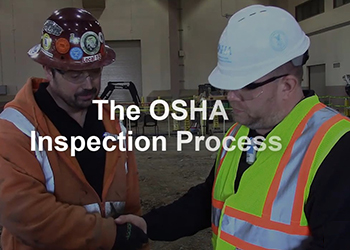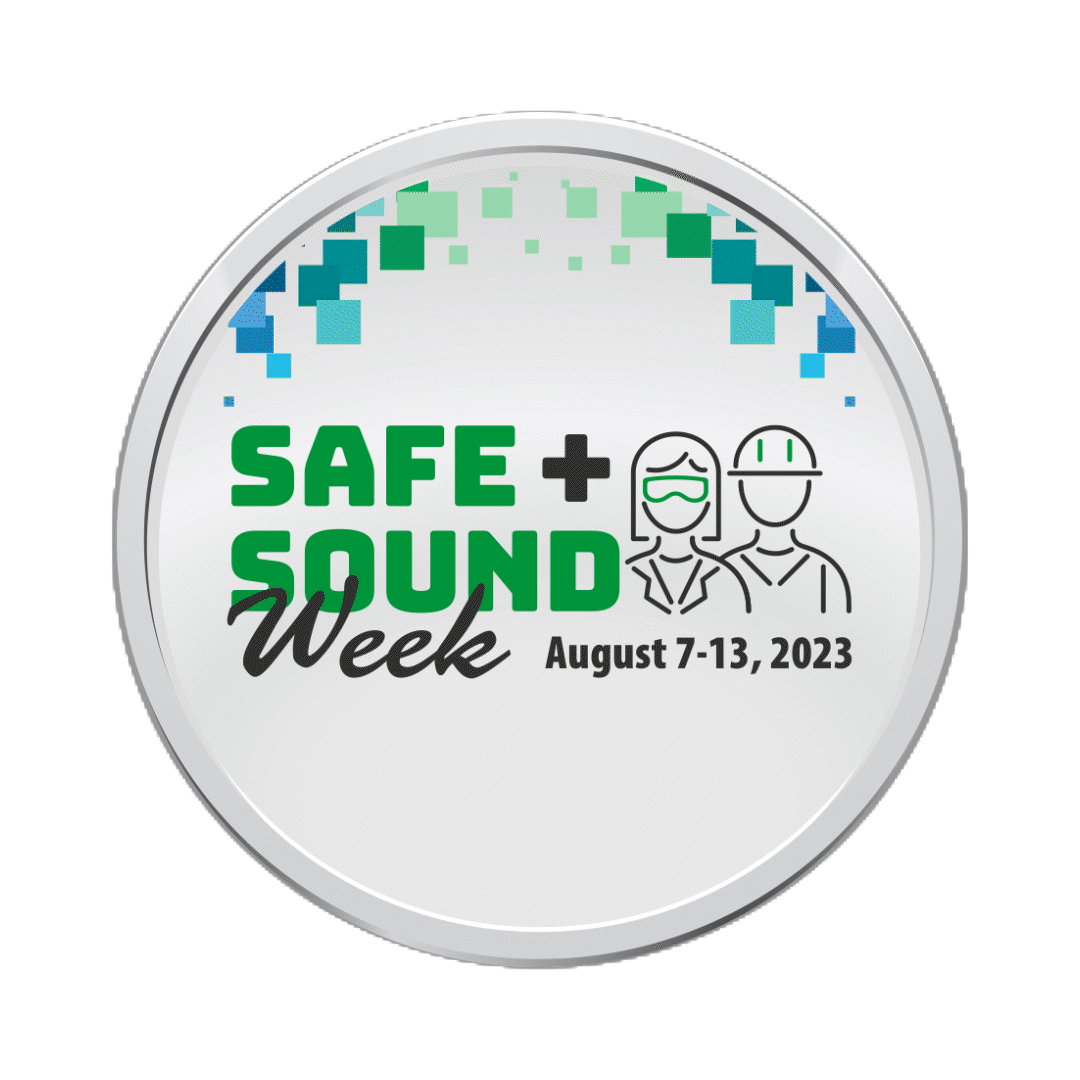
As part of the NDA Alliance Program with the Occupational Safety and Health Administration (OSHA), NDA members and the public have access to compliance assistance resources. This allows NDA members and the public access to resources and contact information of regulatory compliance staff in all 50 states and consult with them on a variety of rules and regulations affecting the industry. For more information please visit the National Demolition Association (NDA) Alliance webpage at osha.gov.
For the full text of the agreement go here.
Compliance Assistance Specialist Directory - To find the OSHA Compliance Assistance Specialist click on a state to locate your local offices in your area. Contact information will appear.
Understanding OSHA Inspections
A new video explains the OSHA inspection process and how the agency is helping to protect workers from workplace hazards.
|

|
NDA Alliance Material Produced in Partnership with OSHA
In collaboration with OSHA, the Alliance will focus on developing best practices in demolition communication, power plant decommisioning and implossion guideance. These documents are related to the Alliance will be housed in this section of the webpage upon completion for use by industry practitioners and stakeholders.
Safe + Sound Campaign
 The National Demolition Association is pleased to support Safe + Sound Week, a nationwide event to raise awareness and understanding of the value of safety and health programs in workplaces. Particpation is year round. This year Safe + Sound Week was August 7-13, 2023. Check back for 2024 dates. We encourage members to sign up to participate in Safe + Sound Week and undertake activities that promote management leadership, worker participation, and a systematic approach to finding and fixing hazards. To sign up to receive updates, get activity ideas, access free planning and promotional tools, and to see who else is participating in Safe + Sound Week, visit www.osha.gov/safeandsoundweek.
The National Demolition Association is pleased to support Safe + Sound Week, a nationwide event to raise awareness and understanding of the value of safety and health programs in workplaces. Particpation is year round. This year Safe + Sound Week was August 7-13, 2023. Check back for 2024 dates. We encourage members to sign up to participate in Safe + Sound Week and undertake activities that promote management leadership, worker participation, and a systematic approach to finding and fixing hazards. To sign up to receive updates, get activity ideas, access free planning and promotional tools, and to see who else is participating in Safe + Sound Week, visit www.osha.gov/safeandsoundweek.
Safe + Sound partners were key collaborators for communication and outreach over the course of the year. Partners communicated about Safe + Sound Week through multiple channels, including email/listservs, Facebook, Twitter, newsletters, and website announcements.
Other OSHA Resources
Demolition Standards:
Demolition work involves many of the hazards associated with construction; therefore, all of 29 CFR Part 1926 – Construction Standards apply at a demolition site. However, demolition involves additional hazards due to unknown hazards, which makes demolition work particularly dangerous. For this reason, OSHA created the Subpart T – Demolition standards specifically for these operations. OSHA Standards
Demolition: Construction in Reverse, with Additional Hazards
Guidance Documents:
Demolition-Specific Guidance:
Other Documents Containing Demolition Guidance:
- OSHA Technical Manual (OTM). OSHA Directive TED 01-00-015 [TED 1-0.15A], (January 20, 1999).
- Demolition. Includes information on preparatory operations, special structures demolition, and safe blasting procedures.
Silica:
OSHA Respirable Crystalline Silica - 64 Frequently Asked Questions
Combustible Dust:
Hazard Communication Guidance for Combustible Dusts
Fact Sheet: Hazard Alert: Combustible Dust Explosions
Combustible Dust Poster
Weather and Seasonal Outdoor Conditions:
Health & Safety Topic: Occupational Heat Exposure
Campaign to Prevent Heat Illness in Outdoor Workers
Heat Illness: Prevent Heat Illness at Work Pamphlet
- (OSHA 4135 - 2021) (English: PDF)NEW
- (OSHA 4135 - 2021) (Spanish: PDF)NEW
Heat Illness: Prevent Heat Illness at Work Poster
- (OSHA 3431 - 2021) (English: PDF)Revised
- (OSHA 3432 - 2021) (Spanish: PDF)Revised
Quick Card: Protecting Workers from Heat Stress
Health and Safety Topic: Winter Weather: Plan; Equip; Train
Quick Card: Protecting Workers from Cold Stress
Personal Protection:
Health and Safety Topics: Personal Protective Equipment
Health and Safety Topics: Eye and Face Protection
Small Entity Compliance Guide for the Respiratory Protection Standard
Cranes Used for Material Delivery to Construction Sites:
Small Entity Compliance Guide for the Final Rule for Cranes and Derricks in Construction
Fact Sheet: Operator Qualification and Certification
Fact Sheet: Signal Person Qualification
Hazard Communication
Hazard Communication Guidelines for Compliance
Hazard Communication Small Entity Compliance Guide for Employers That Use Hazardous Chemicals
Fact Sheet: Steps to an Effective Hazard Communication Program for Employers That Use Hazardous Chemicals
Fact Sheet: December 1st, 2013 Training Requirements for the Revised Hazard Communication Standard
OSHA Brief: Hazard Communication Standard: Labels and Pictograms
OSHA Brief: Hazard Communication Standard: Safety Data Sheets
Quick Card: Hazard Communication Safety Data Sheets (English) and (Spanish)
Quick Card: Hazard Communication Standard Labels (English) and (Spanish)
Quick Card: Hazard Communication Standard Pictogram (English) and (Spanish)
For material developed by NDA, please visit the NDA store.
Robot System Safety
OSHA, NIOSH, and the Association for Advancing Automation (A3) developed an updated chapter for the OSHA Technical Manual to provide technical information to Compliance Safety and Health Officers and others who may be performing inspections at facilities with robot systems.
Suicide Prevention:
Worker suicides are particularly concerning for the construction industry. The suicide rate for construction workers is four times higher than in the general population, due in large part to work-related stresses such as seasonal work, demanding schedules and workplace injuries. OSHA has developed a webpage with resources and tools in English and Spanish.
Trenching and Excavation:
Quick Card: Working Safely in Trenches
Other Areas of Interest:
Quick Card: Emergency Exit Routes
OSHA Fact Sheet: Natural Disaster Recovery: Cleanup Hazard
Construction, Waste Management, and Remediation
Sustainable Workplace Alliance developed training materials in English and Spanish for workers in the construction, waste management, and remediation industries on topics such as aerial lifts in construction, fall protection, confined space, chemical hazards/ hazard communication, personal protection equipment, and powered industrial trucks.
NIOSH Resource on Protecting Temporary Workers: Best Practices for Host Employers
The National Institute for Occupational Safety and Health (NIOSH) and the National Occupational Research Agenda (NORA) Services Sector Council—in partnership with the American Society of Safety Professionals (ASSP), the American Staffing Association (ASA), and the Safety and Health Assessment and Research for Prevention (SHARP) Program within Washington State’s Department of Labor and Industries—have released a new set of best practices, Protecting Temporary Workers: Best Practices for Host Employers, to help host employers better protect the safety and health of temporary workers.
Research shows that the risk of experiencing a work-related injury may be higher for temporary workers compared to non-temporary workers. This new resource provides detailed best practices for host employers that are applicable across industries and occupations. It is organized into three areas:
- How to evaluate and address workplace safety and health in a written contract
- Training for temporary workers and their worksite supervisors
- Injury and illness reporting, response, and recordkeeping
The document also includes scenarios of how host employers can implement the best practices as well as checklists that can be printed or completed electronically. There is also a complementary slide deck staffing companies can use to educate their host employer clients about the best practices.
Through the Temporary Worker Initiative, the Occupational Safety and Health Administration (OSHA) has issued numerous guidance documents outlining the joint safety and health responsibilities of staffing companies and host employers. This new resource builds on this work by providing an in-depth set of best practices for host employers to follow and supporting materials to facilitate their implementation.